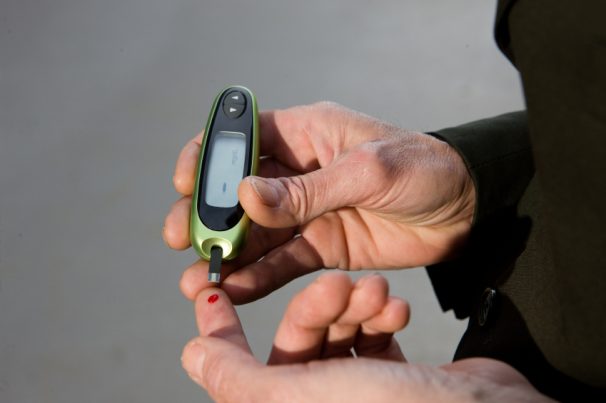
Diabetes mellitus – causes, side effects and treatments at NaturalPedia.com
Wednesday, February 28, 2018 by Michelle Simmons
http://www.naturalpedia.com/diabetes-mellitus-causes-side-effects-and-treatments-at-naturalpedia-com.html

Diabetes mellitus is the Latin name for diabetes. This disease prevents the body from properly using the energy from the food you eat. This condition is a chronic disease that is a result of inherited and/or acquired deficiency in production of insulin by the pancreas, or by the impotency of the insulin produced. This deficiency leads to higher concentrations of glucose in the blood, which in turn harms many of the body’s systems, specifically the blood vessels and nerves.
There are three most common types of diabetes mellitus – type-1 and type-2 diabetes mellitus and gestational diabetes mellitus. Type-1 diabetes mellitus develops when the body cannot make insulin, which is required to control blood glucose levels. On the other hand, type-2 diabetes mellitus is much more common, and occurs when the body cannot produce enough insulin or the insulin is not working efficiently. Gestational diabetes mellitus develops when pregnant women have increased blood glucose levels because of hormones produced in pregnancy. Pregnant women with gestational diabetes have a higher risk of developing type-2 diabetes later in life.

Known side effects of diabetes mellitus
Some of the known side effects of diabetes mellitus include excessive urination, excessive thirst, which leads to the drinking of a lot of fluid, and weight loss. People with diabetes also have a higher risk of getting infections, especially yeast infection. Diabetes mellitus can also result in nausea and vomiting, drowsiness, blurred vision, and reduced endurance during exercise, according to an article published on the website MerckManuals.com. Furthermore, long-term diabetes can lead to other complications, such as atherosclerosis, retinopathy, neuropathy, foot problems, and nephropathy.
Body systems harmed by diabetes mellitus
The body systems harmed by diabetes mellitus include the endocrine, excretory, and digestive, circulatory, integumentary, reproductive, and central nervous systems. Individuals with diabetes mellitus may experience loss of consciousness, visual disturbances, extreme thirst, sweet-smelling breath, cataracts and glaucoma, fatigue and lack of energy, high blood pressure, pancreas malfunction, gastroparesis, excessive urination, protein in the urine, nerve damage, dry, cracked skin, ketoacidosis, and foot problems. There is an increased risks of stroke, heart disease, and infections for people with this condition.
List of foods or nutrients that prevent diabetes mellitus
According to an entry published on the website FoxNews.com, the foods that can help prevent diabetes include apples, yogurt, asparagus, beans and legumes, chia seeds, berries, coffee, pumpkin seeds, brown rice, and vinegar. Moreover, according to an article published on the website Prevention.com, other foods that are blood suger-friendly are dairy, salmon, tuna, barley, oats, dates, green vegetables, lentils, flaxseed, walnuts, peanut butter, and dark chocolate.
Treatments, management plans for diabetes mellitus
Treatment and management options for diabetes mellitus include proper diet and exercise, insulin therapies, and drugs used to control blood glucose levels.
Where to learn more
- Natural Remedies for Diabetes Mellitus
- Risks of sulfonylurea drugs in the treatment of diabetes mellitus (press release)
- New study claims statin drugs raise the risk of type-2 diabetes by almost 30%
- 13 Medicinal Benefits of Guava and Guava Leaves
- Want to get off those diabetes meds? Research shows a diet high in protein and good fats but low in carbs helps manage the disease
Summary
Diabetes mellitus is a chronic disease that is caused by the lack of insulin or ineffectiveness of the insulin produced by the pancreas, which leads to higher levels of glucose in the blood.
Diabetes mellitus causes excessive urination, excessive thirst, weight loss, loss of consciousness, visual disturbances, extreme thirst, sweet-smelling breath, cataracts and glaucoma, fatigue and lack of energy, high blood pressure, pancreas malfunction, gastroparesis, nerve damage, dry, cracked skin, ketoacidosis, foot problem, and increased risks of stroke, heart disease, and infections.
Diabetes mellitus harms the endocrine, excretory, and digestive, circulatory, integumentary, reproductive, and central nervous systems.
Diabetes mellitus can be prevented by consuming apples, yogurt, asparagus, beans and legumes, chia seeds, berries, coffee, pumpkin seeds, brown rice, and vinegar.
Diabetes mellitus can be managed with proper diet and exercise, insulin therapies, and drugs used to control blood glucose levels.
Sources include:
Tagged Under: Tags: diabetes mellitus





